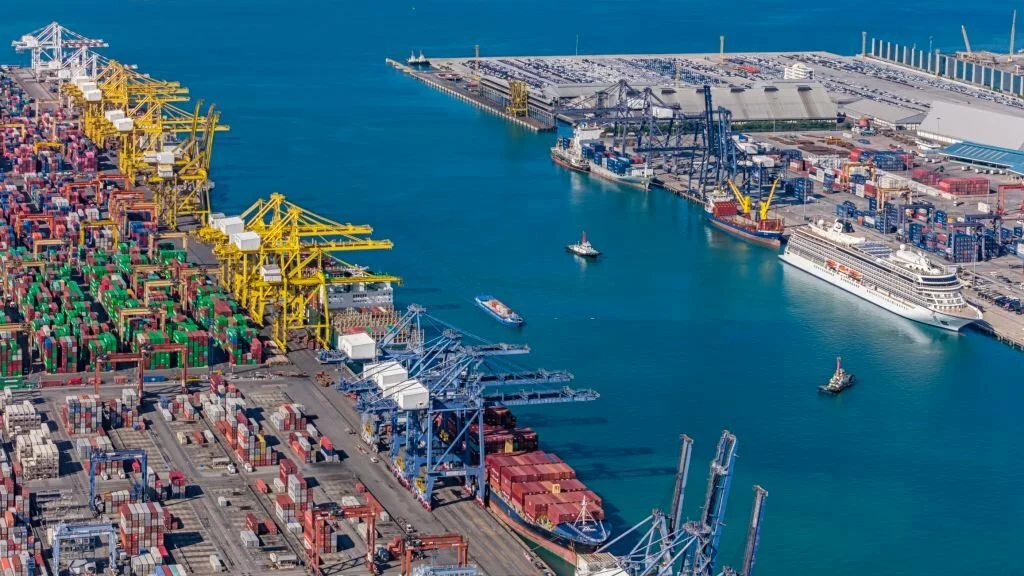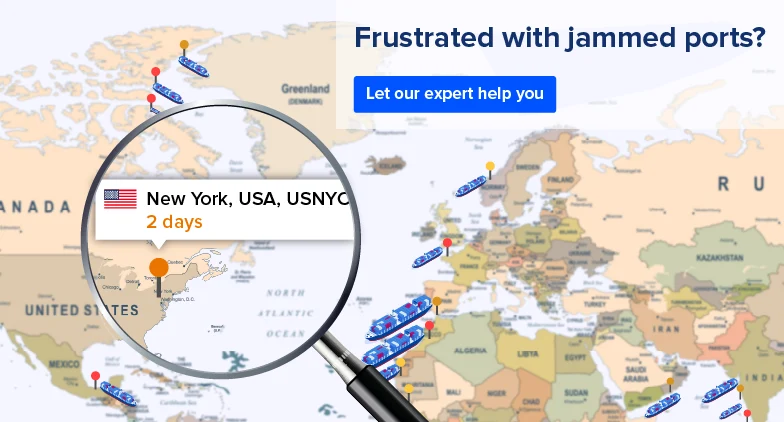Exploring the Top 10 Ports in Asia 2024: Navigating the Hubs of Trade
Did you know that Asia houses some of the busiest ports on the planet, where colossal ships move goods at a mind-boggling rate of thousands of tons per hour? These ports are like the bustling marketplaces of the sea, where goods from every corner of the globe converge, ready to set off on their next adventure.
Just think about the action-packed scenes at these ports: massive ships docking, loads of stuff being unloaded, and all of it zipping around the world in no time. These aren’t your run-of-the-mill ports; they’re like the command centers of global trade, using all sorts of cool tech and smart systems to move things around faster than you can imagine.
From the high-tech wonders of Singapore’s Port, a paragon of efficiency and innovation, to the strategic marvel of Shanghai, a colossus handling staggering volumes of trade, Asia’s ports stand as a testament to the relentless march of progress. They embody the convergence of tradition and modernity, where centuries-old practices merge seamlessly with state-of-the-art automation.
These ports aren’t just about ships coming and going—they’re the engines of prosperity, the places where countries connect and businesses thrive. They’re the living, breathing proof of how interconnected our world truly is, where different cultures and economies meet and make things happen.
The Rising Importance of Asian Ports in Global Trade
In the whirlwind of global trade, Asia, especially China is the undeniable superstar. Here’s a mind-blowing fact: in 2020, despite the rollercoaster of the pandemic, Asia carried a whopping 41% of the world’s goods! When COVID hit, shipments from Asia to North America took a nosedive, dropping by 13%, only to skyrocket by a jaw-dropping 36% later that year.
And get this: while this drama unfolded, Asia’s container ports barely skipped a beat, just a tiny 0.4% dip, confirming their reign as THE hub for global shipping. What’s more? The top five most-connected economies in shipping are all from Asia – China, Hong Kong, Malaysia, Republic of Korea, and Singapore. In the realm of global trade and logistics, Asia, led by China, isn’t just a player; it’s the league leader, defining the game.
As Asia strengthens its trade ties worldwide, these ports are no longer just bustling hubs; they’re evolving into essential nerve centers. They’re not simply facilities but monumental players, shaping the very fabric of global commerce. With each shipment arriving and departing, they engrave their significance deeper into the intricate web of international trade. These ports aren’t just growing in size; they’re defining the trajectory of global trade, amplifying their influence and underlining their role as the linchpins of a rapidly evolving global economy.
Methodology for Ranking the Ports
Here’s the scoop on how we uncovered the coolest ports in Asia for 2024. We didn’t just throw darts at a map; we dug deep into what makes these ports stand out:
Container Mastery: We sized up their muscle in handling containers, the backbone of moving goods worldwide. Think of it as weighing their strength in shifting stuff around.
Port Prowess: We checked their skills in handling cargo and how much space they’ve got. After all, size matters when it comes to handling all those shiploads.
Tech Wizardry: Ever heard of ports diving into futuristic tech? We did! We peeked into their bag of tricks to see if they’re pulling off some seriously cool, next-gen stuff. Think eco-friendly meets mind-blowing innovation.
Economic Champions : These ports aren’t just busy hubs; they’re economic powerhouses. We checked if they’re creating jobs, pumping money into their cities, and basically being superheroes for their countries.
In a nutshell, we didn’t just pick these ports randomly. We peeked behind the curtains to unveil the stars of Asia’s port scene where muscle, skill, tech, and economic prowess collide in the most impressive ways imaginable.
Explore live global port congestion data while uncovering Asia’s top trade hubs in 2024.
Comprehensive Overview of the Top 10 Ports in Asia
Here’s a rundown of the top 10 ports shaping economies and connecting nations:
Port of Shanghai, China – The Powerhouse Haven
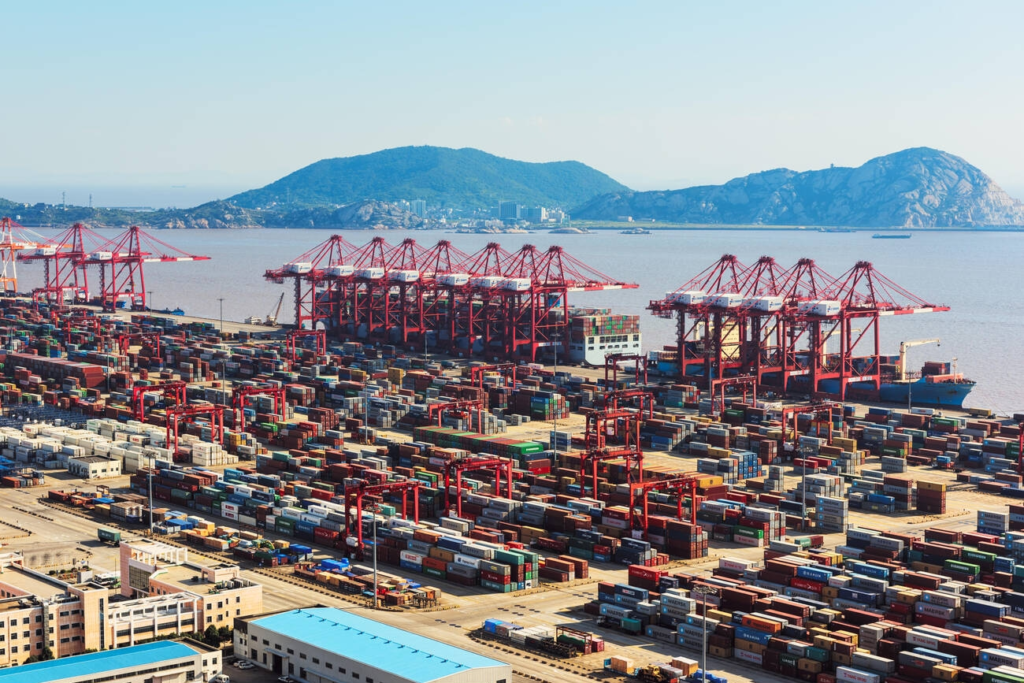
Handling a whopping 47 million TEUs annually, Shanghai’s port blends history with innovation. It’s a testament to China’s economic might, boasting the world’s largest automated container terminal at Yangshan Deepwater Port.
Port of Singapore, Singapore – Maritime Gem of the Lion City
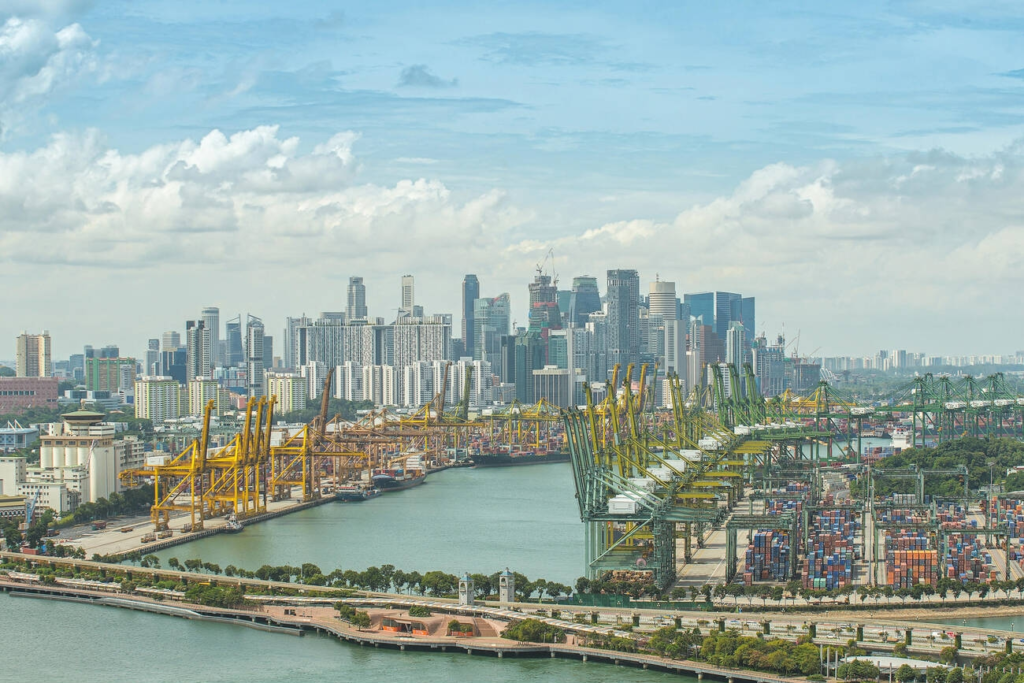
Singapore’s strategic location fuels its prominence, managing over 37 million TEUs. Acting as a gateway to East and West Asia, it’s the go-to spot for businesses eyeing burgeoning markets with a stunning skyline backdrop.
Port of Ningbo, China – Silk Road’s Modern Hub
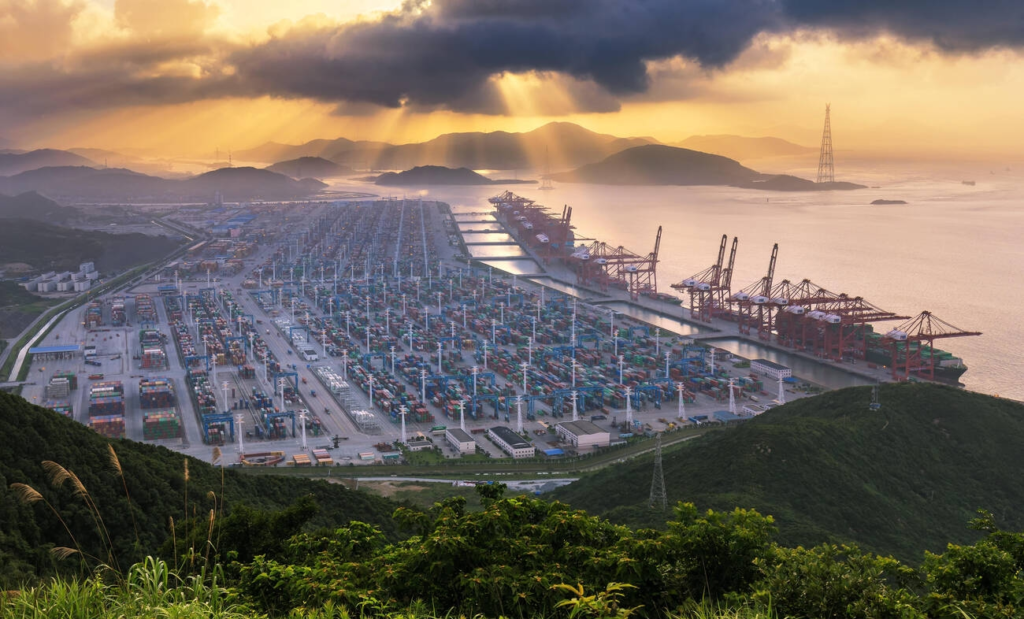
A key player with 33.3 million TEUs, Ningbo is the intersection of historical trade routes. With connections to 600 ports globally, it’s a nod to both historical significance and modern efficiency.
Port of Shenzhen, China – Coastal Symphony of Harbors
Shenzhen’s maritime landscape isn’t just a port; it’s a 260-km stretch handling over 30 million TEUs. With interconnected harbors, it’s a crucial node in the global container traffic network.
Port of Guangzhou, China – Pearl River’s Cargo Maestro
At 24 million TEUs, Guangzhou’s Nansha port pulses with international shipping routes, linking cities along the Pearl River Delta.
Port of Busan, South Korea – Peninsula’s Cargo Hub
With 21.9 million TEUs and a history dating back to 1876, Busan manages 80% of South Korea’s containerized cargo, aiming for a higher global port rank.
Port of Qingdao, China – Gateway Along the New Silk Road
Handling 25 million TEUs, Qingdao is crucial for Middle East service routes, serving as a northern beacon for China’s maritime trade.
Port of Hong Kong, Hong Kong – Southeast Asia’s Maritime Hub
Beyond its stunning skyline, Hong Kong manages over 20 million TEUs, playing a pivotal role in the region’s maritime trade.
Port of Tianjin, China – Beijing’s Maritime Hub
With eco-friendly initiatives and 18 million TEUs, Tianjin stands as Beijing’s maritime gateway, eyeing a rising status in Northern China’s shipping.
Port Klang, Malaysia – Gem Along the Strait of Malacca
Handling 13 million TEUs, Port Klang’s strategic location cements Malaysia’s spot in the global shipping arena.
These ports aren’t just docking points; they’re the lifeblood of global commerce, connecting dreams and ambitions across continents.
Technological Innovations in Asian Ports
Asian ports are stepping into the future with incredible innovations! Imagine massive robot cranes smoothly handling containers, reducing the need for an army of workers and making operations faster and more cost-effective.
Thanks to smart computers powered by data analytics and AI, these ports are becoming super-efficient. They’re like traffic managers, foreseeing issues and making smart decisions to keep everything running smoothly. It’s all about using data to predict problems and fine-tune operations.
With loads of information at their fingertips, these ports are practically wizards! They’re spotting issues, optimizing processes, and even designing virtual versions of themselves to perfect layouts before implementation. It’s like watching a well-oiled machine in action, turning Asian ports into models of efficiency that keep global trade moving seamlessly.
The Tuas Mega Port in Singapore is setting its sights on becoming the globe’s foremost automated port by 2040, as highlighted in a recent GovInsider article. To match its port capacity, Singapore developed the Next Generation Vessel Traffic Management System (NGVTMS), a game-changer in maritime tech. David Foo, from the Maritime Port Authority, highlights how NGVTMS, fueled by AI, predicts collisions and optimizes vessel routes amidst increasing traffic.
This cutting-edge system relies on high-performance computing and a robust 5G network, allowing remote ship guidance and real-time data exchange. With an unwavering focus on cybersecurity, Singapore fortifies NGVTMS against breaches, setting a gold standard for maritime security.
Moreover, the city’s commitment to innovation through the Maritime Innovation Lab 2.0 solidifies its position as a pioneer in port technology. Singapore’s strides in technological advancements underscore how innovation is reshaping ports globally, positioning them as hubs of efficiency and safety. The integration of AI, 5G, and cybersecurity propels Singapore’s ports to the forefront of maritime excellence, setting a benchmark for the world.
Sustainability and Green Initiatives
In this bustling world of Asian ports, a quiet but impactful revolution is underway one that’s reshaping these hubs into guardians of the environment.
Embracing Renewable Energy: Imagine ports harnessing the sun and wind to power their operations. It’s not just a dream; it’s happening. Take Shanghai’s Yangshan port, boasting the world’s largest rooftop solar setup. This powerhouse generates clean energy, equivalent to powering thousands of homes, making sustainability a practical reality.
Cutting Diesel Pollution: Big ships usually rely on noisy and dirty diesel engines. But when these ships dock, some ports now offer them land-based electricity instead. Singapore’s PSA International leads this charge, significantly reducing pollution and noise at its terminals.
Transitioning to Cleaner Machines: Within ports, massive machines like cranes and trucks are switching from diesel to electricity. These silent, eco-friendly champions are preserving air quality and minimizing pollution.
Promoting Eco-friendly Practices: Ports are evolving into greener spaces by adopting eco-friendly lighting, recycling initiatives, and sustainable construction materials. Hong Kong’s Green Terminal sets an example, teaching others how to maintain cleanliness and environmental consciousness.
Implementing Smart Solutions: Ports are using smart technology to optimize logistics and reduce fuel consumption. By deploying intelligent strategies, they’re ensuring more efficient operations with less impact on the environment.
Collaborative Sustainability: Various players within the maritime industry are teaming up for a common goal making maritime transportation more sustainable. Initiatives like the Green Corridor advocate for cleaner fuels on specific routes, fostering a culture of sustainability across the maritime sector.
From harnessing the sun and wind to power their operations to championing eco-friendly practices and embracing smart solutions, these ports are rewriting the script of maritime sustainability. . In this collective endeavor, the seas and skies grow clearer, echoing a promise of a more sustainable tomorrow for generations to come.
Economic Impact of the Leading Asian Ports
Exploring the economic might of Asia’s top ports reveals more than just trade hubs they’re
economic engines propelling local and national growth. These ports stand as significant job creators, fostering employment not just within their confines but also across a spectrum of related industries, creating a domino effect of opportunities.
Their impact on GDP is monumental. The colossal volume of trade translates into substantial revenue, empowering governments to invest in essential infrastructure and community development. Moreover, these ports act as magnets, attracting talent and educational institutions focused on maritime expertise, nurturing a pool of skilled individuals driving innovation and progress.
In parallel, they serve as vibrant business hotspots, drawing enterprises eager to leverage global trade networks, fostering thriving economic ecosystems that breed innovation and dynamism.
In essence, these ports transcend their logistical role, shaping economies and communities, driving growth, and fostering a landscape where commerce thrives and ideas flourish.
Role in Global Trade Dynamics
Asian ports serve as the conductors orchestrating the global movement of goods. These ports play a pivotal role:
They’re not just gateways; they’re the logistical engines powering global commerce, ensuring goods reach their destinations seamlessly, contributing to the interconnectedness of trade worldwide.
Their innovative approach sets them apart they constantly pioneer new technologies and smarter methods. Think reduced waiting times, decreased costs, and an optimized environment for businesses to thrive.
Yet, they’re not confined to the usual routes; these ports are explorers, carving new paths for trade. They create fresh opportunities for businesses to expand and connect globally, making the trade landscape more diverse and accessible.
Their size isn’t just about handling goods; it’s about wielding significant influence. They set standards and prices that reverberate worldwide, impacting everything from commodities to consumer goods.
Moreover, they’re not just logistical hubs; they’re strategic powerhouses. Positioned strategically, they shape global interactions, influencing international dynamics and occasionally reshaping global policies.
Conclusion
In the vibrant world of Asian ports, a remarkable saga unfolds – one of innovation, resilience, and pivotal significance in global trade. These ports, far beyond their physical structures, embody the nexus of economic prowess, technological innovation, and environmental stewardship. They’re not mere gateways; they’re the beating heart of a global economy, orchestrating connections, fostering growth, and shaping the future of international trade. As they evolve, these ports continue to be the silent architects of a more interconnected world, where commerce thrives, ideas flourish, and possibilities know no bounds.
